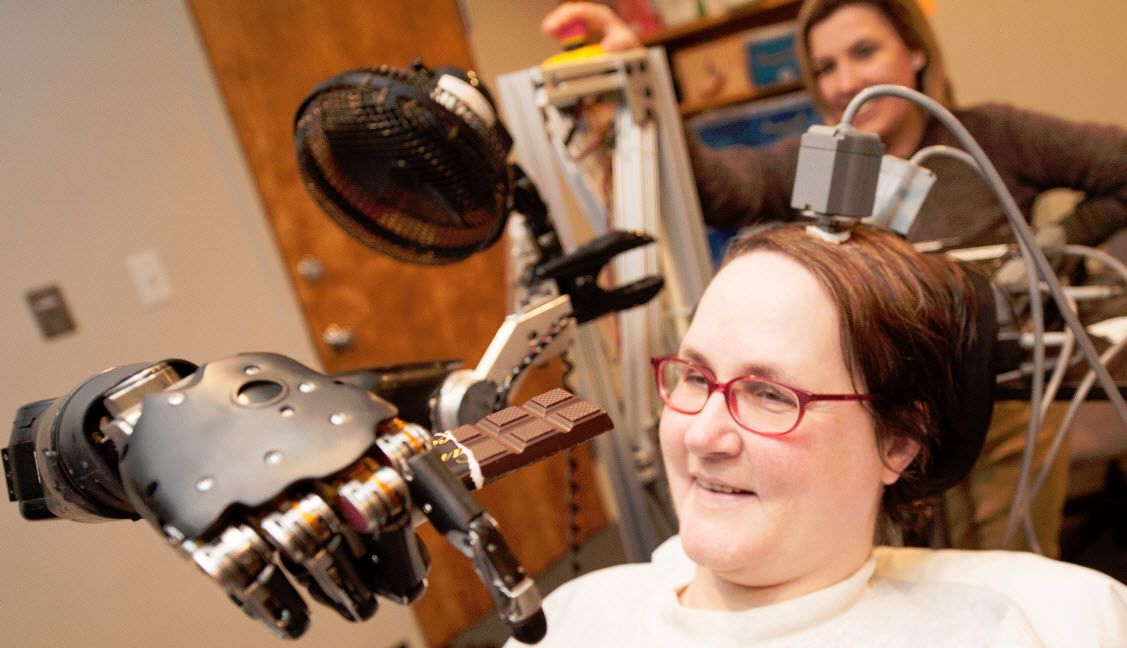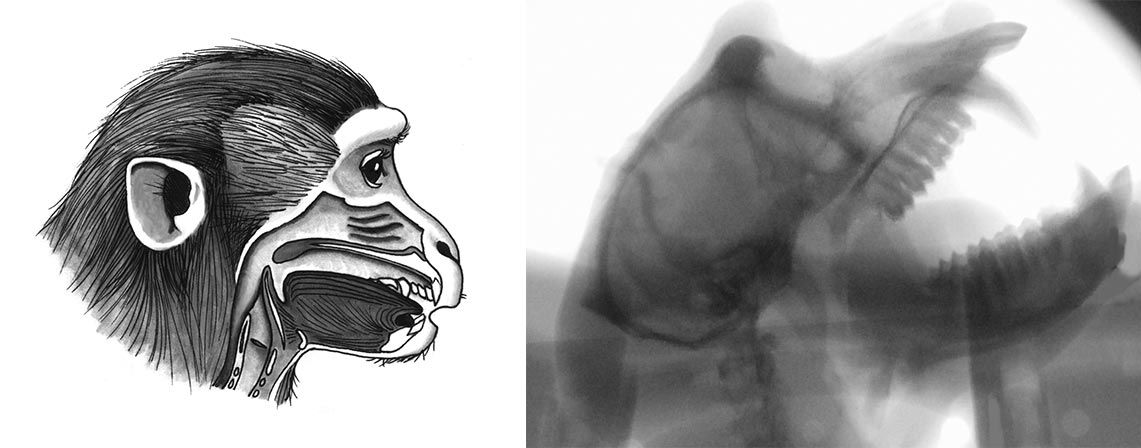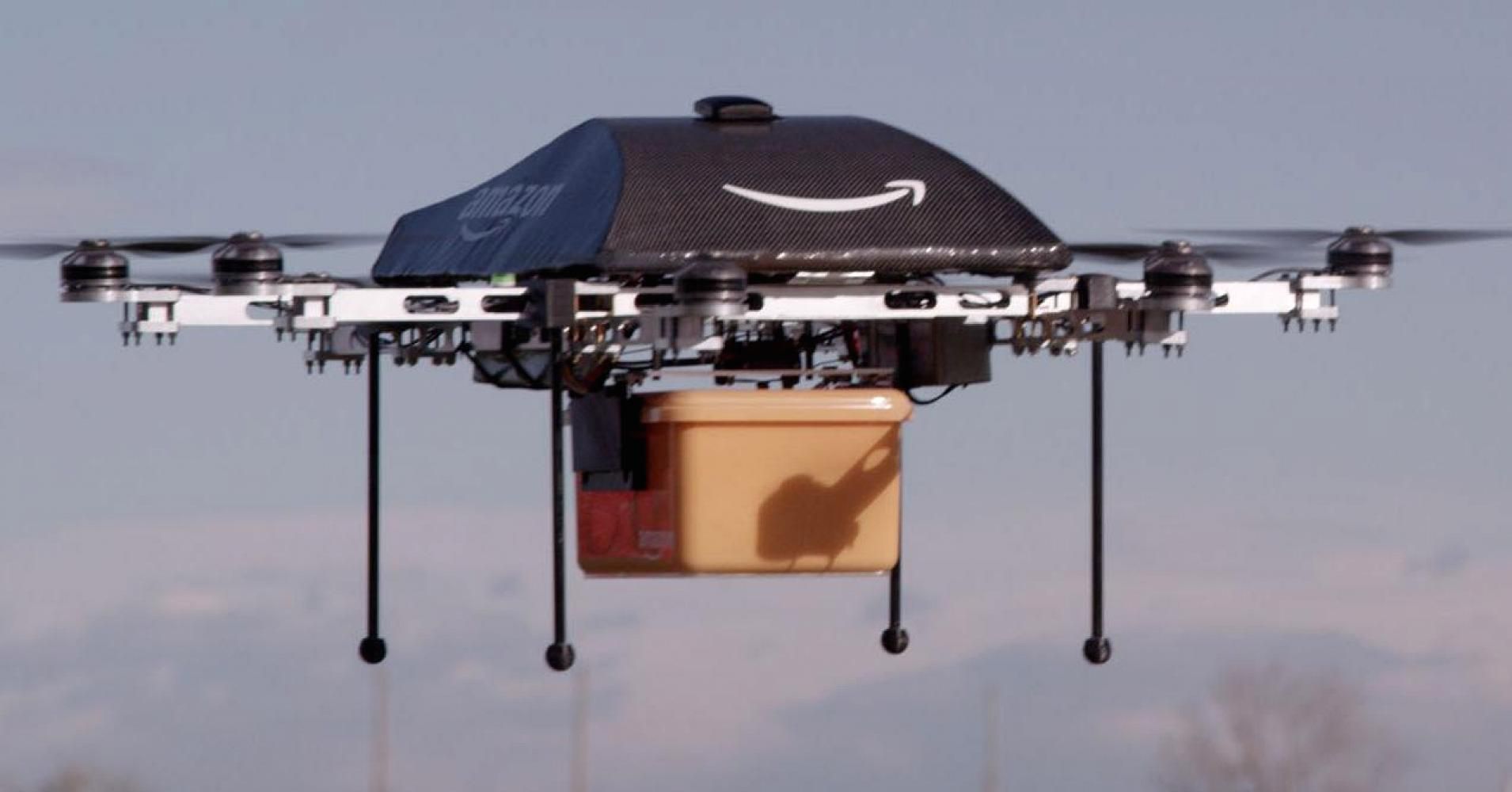Page 10665
Dec 15, 2016
How to control a robotic arm with your mind — no implanted electrodes required
Posted by Sean Brazell in categories: biotech/medical, engineering, robotics/AI


Researchers at the University of Minnesota have achieved a “major breakthrough” that allows people to control a robotic arm in three dimensions, using only their minds. The research has the potential to help millions of people who are paralyzed or have neurodegenerative diseases.
Continue reading “How to control a robotic arm with your mind — no implanted electrodes required” »
Dec 14, 2016
Japan Has a Radically Different Approach to AI
Posted by Shane Hinshaw in category: robotics/AI
Dec 14, 2016
Uber draws ire of California DMV for testing self-driving cars in S.F. without permit
Posted by Dan Kummer in categories: robotics/AI, transportation

Ooops.
SACRAMENTO, Dec. 14 (UPI) — The California Department of Motor Vehicles issued a warning of sorts to rideshare company Uber on Wednesday, apparently for wading too far into the waters of testing self-driving vehicles in San Francisco.
Dec 14, 2016
Ancient Human Ancestor Was One Tall Dude, His Footprints Say
Posted by Sean Brazell in category: futurism
He stood a majestic 5-foot-5, weighed around 100 pounds and maybe had a harem. That’s what scientists figure from the footprints he left behind some 3.7 million year ago.
He’s evidently the tallest known member of the prehuman species best known for the fossil skeleton nicknamed “Lucy,” reaching a stature no other member of our family tree matched for another 1.5 million years, the researchers say.
The 13 footprints are impressions left in volcanic ash that later hardened into rock, excavated last year in northern Tanzania in Africa. Their comparatively large size, averaging a bit over 10 inches long (26 centimeters), suggest they were made by a male member of the species known as Australopithecus afarensis.
Continue reading “Ancient Human Ancestor Was One Tall Dude, His Footprints Say” »
Dec 14, 2016
Monster-wheat grown by Oxford could revolutionise farming
Posted by Shane Hinshaw in categories: energy, food, genetics
A crop spray which can boost farmer’s wheat yields by one fifth, without the need for genetic modification, has been developed by scientists at Oxford University.
Researchers have found a molecule which helps plants make the best use of the sugary fuel that they generate during photosynthesis. And with more fuel, the plants can produce bigger grains.
Other scientists in Britain have developed ways to genetically modify crops to increase yields, and the Department of Environment is currently deciding whether to allow a field trial for GM wheat in Hertfordshire.
Continue reading “Monster-wheat grown by Oxford could revolutionise farming” »
Dec 14, 2016
Elon Musk and Uber CEO Travis Kalanick are joining Trump’s economic advisory team
Posted by Shane Hinshaw in categories: economics, Elon Musk
The two executives are joining a team that also includes JPMorgan CEO Jamie Dimon and General Motors chief exec Mary Barra.
Dec 14, 2016
Macaque monkeys have the anatomy for human speech, so why can’t they speak?
Posted by Sean Brazell in categories: computing, neuroscience

While they have a speech-ready vocal tract, primates can’t speak because they lack a speech-ready brain, contrary to widespread opinion that they are limited by anatomy, researchers at Princeton University and associates have reported Dec. 9 in the open-access journal Science Advances.
The researchers reached this conclusion by first recording X-ray videos showing the movements of the different parts of a macaque’s vocal anatomy — such as the tongue, lips and larynx. They then converted that data into a computer model that could predict and simulate a macaque’s vocal range.
Continue reading “Macaque monkeys have the anatomy for human speech, so why can’t they speak?” »
Dec 14, 2016
IBM’s Watson supercomputer discovers 5 new genes linked to ALS
Posted by Shane Hinshaw in categories: biotech/medical, neuroscience, robotics/AI, supercomputing
IBM Watson is known for its work in identifying cancer treatments and beating contestants on Jeopardy! But now the computing system has expertise in a new area of research: neuroscience.
Watson discovered five genes linked to ALS, sometimes called Lou Gehrig’s disease, IBM announced on Wednesday. The tech company worked with researchers at the Barrow Neurological Institute in Phoenix, Arizona. The discovery is Watson’s first in any type of neuroscience, and suggests that Watson could make discoveries in research of other neurological diseases.
SEE ALSO: This high-tech E.L.F. is guiding confused shoppers with the help of IBM’s Watson.
Dec 14, 2016
Inexpensive Diabetes Drug May Be New Weapon in War on Cancer
Posted by Shane Hinshaw in category: biotech/medical
Sometimes a drug intended for one purpose turns out to have other uses. Metformin, a treatment for type 2 diabetes, may prove effective in treating cancer.
Researchers are a step closer to figuring out how metformin may help prevent cancer.
Metformin is generally used to treat type 2 diabetes. The drug helps the body use insulin more effectively.
Continue reading “Inexpensive Diabetes Drug May Be New Weapon in War on Cancer” »














